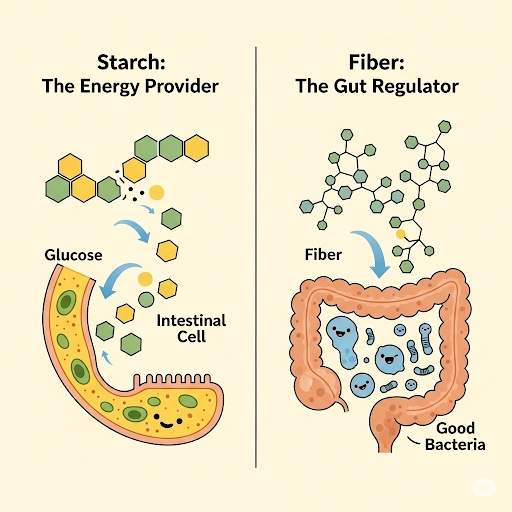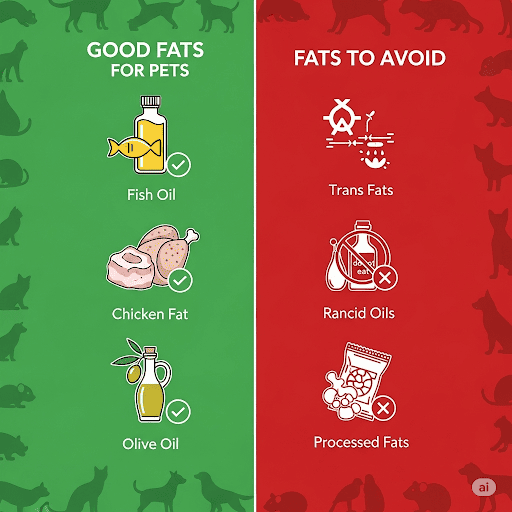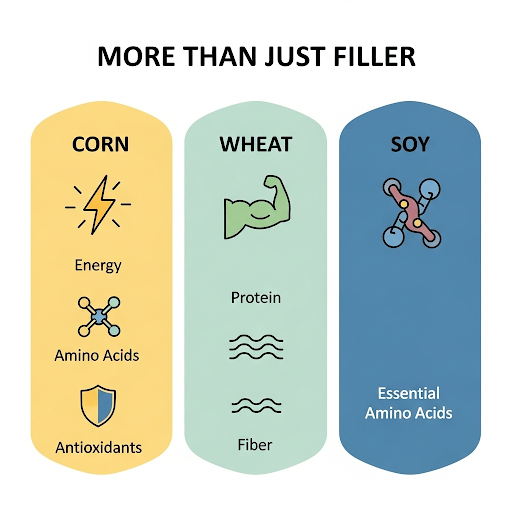Walk down any pet food aisle today and you'll see "low glycemic" proudly displayed on premium bags. But does the glycemic index of pet food actually matter for your dog or cat? The answer isn't as straightforward as pet food marketers would have you believe—and the science reveals some surprising species-specific differences.
As a concept borrowed from human nutrition, glycemic index (GI) measures how quickly carbohydrates raise blood sugar levels. But here's the critical question: do our carnivorous companions process carbohydrates the same way we do? Recent research suggests the answer varies dramatically between dogs and cats.
Understanding Glycemic Index in Pet Nutrition
The glycemic index ranks carbohydrate-containing foods on a scale of 0-100 based on how rapidly they increase blood glucose levels after eating. Foods with a high GI (above 70) cause rapid blood sugar spikes, while low GI foods (below 55) produce a gradual, sustained rise.
In human nutrition, this concept helps manage diabetes, weight, and energy levels. But when applied to pet food, we encounter some fundamental challenges:
- Pets evolved as carnivores with limited carbohydrate needs
- Most commercial pet foods contain 40-60% cereals and starches
- Dogs and cats metabolize carbohydrates differently than humans
- Individual variation in glycemic response is significant
The concept of glycemic index appears valid in dogs, but not cats, according to recent scientific research that examined species differences in carbohydrate metabolism.
Dogs vs. Cats: The Glycemic Response Divide
Understanding how your specific pet processes carbohydrates is crucial for making informed dietary decisions.
Dogs: The Adaptable Carbohydrate Processors
Dogs have evolved some ability to digest starches, making the glycemic index concept more applicable:
Digestive Adaptations:
- Produce amylase enzymes to break down starches
- Show measurable glycemic responses to different carbohydrate sources
- Can benefit from low glycemic dog food in certain situations
- Display individual variation in carbohydrate tolerance
Glycemic Response Patterns: Research shows that sweet potatoes can result in a lower glycemic index due to their higher fibrous fraction and the higher proportion of amylose and resistant starch, which may slow glucose absorption in dogs.
However, among single starch sources and extruded dog foods, there were no differences in the glycemic indices measured in some studies, suggesting individual variation may be more significant than ingredient choice.
Cats: The Carbohydrate-Resistant Obligate Carnivores
Cats present a completely different metabolic picture:
Evolutionary Constraints:
- Limited amylase production
- Minimal evolutionary exposure to carbohydrates
- Species differences between domestic cats and dogs has led to differences in their ability to digest, absorb and metabolize carbohydrates
- Glycemic index concepts may not apply meaningfully
Metabolic Reality: For cats, the focus should be on minimizing carbohydrate content entirely rather than worrying about glycemic index. Their bodies are simply not designed to process significant amounts of any carbohydrates efficiently.
Dogs show measurable glycemic responses while cats have limited carbohydrate processing ability
When Glycemic Index Actually Matters
While the general pet population may not need to worry about glycemic index, certain situations make it critically important:
Diabetic Pets: Where GI Becomes Crucial
For diabetic dogs and cats, high-starch diets cause a rapid increase of glucose into the bloodstream, creating high glucose in the blood when eating. This makes low-glycemic choices essential.
Diabetic Dog Considerations:
- Diabetic dogs need low starch, so each meal doesn't produce a large spike in glucose levels
- Complex carbohydrates preferred over simple sugars
- Complex carbs cause the blood glucose to rise more slowly than simple carbs
- Consistent meal timing and composition crucial
Diabetic Cat Management:
- The carb content in dry foods causes a spike in blood sugar levels
- Ultra-low carbohydrate diets often recommended
- Wet food typically preferred over kibble
- Focus on high-protein, low-carb formulations
Weight Management Applications
Low-glycemic ingredients may support weight management by:
- Promoting satiety and reducing hunger
- Preventing rapid insulin spikes that promote fat storage
- Supporting steady energy levels
- Reducing cravings for additional food
Senior Pet Support
Aging pets with declining metabolic function may benefit from:
- Stable blood sugar levels
- Reduced metabolic stress
- Better energy regulation
- Support for cognitive function
Common High and Low Glycemic Ingredients in Pet Food
Understanding ingredient glycemic values helps you make informed choices:
Higher Glycemic Ingredients (Use Cautiously):
- White rice - quickly digestible starch
- Corn - rapid glucose release
- Potatoes - high starch content
- Tapioca - pure starch source
- Wheat flour - processed grain
Lower Glycemic Options (Better Choices):
- Sweet potatoes - higher fiber content
- Peas and lentils - protein + complex carbs
- Chickpeas - fiber-rich legume
- Oats - slower-digesting grain
- Barley - complex carbohydrate source
Remember, most industrial pet foods on the market contain 40% to 60% cereals which are rich in easily digestible carbohydrates, making ingredient scrutiny important for sensitive pets.
The Marketing vs. Reality Check
Many pet food companies promote low-glycemic formulas as universally beneficial, but the science suggests a more nuanced approach:
Marketing Claims vs. Scientific Evidence:
- GI benefits may be overstated for healthy pets
- Individual variation is often greater than ingredient differences
- Quality protein sources matter more than carbohydrate type for most pets
- Maybe a new, pet-specific GI will evolve from recent research as our understanding improves
When to Consider Glycemic Index: ✅ Your pet has diabetes ✅ Weight management is a priority ✅ Your pet shows signs of blood sugar instability ✅ Recommended by your veterinarian
When It's Less Important: ❌ Healthy adult pets with normal metabolism ❌ Growing puppies and kittens (need energy-dense foods) ❌ Active working dogs (benefit from readily available energy) ❌ Cats (focus on low total carbs instead)
Understanding ingredient glycemic values helps guide food choices for sensitive pets
Practical Applications for Pet Parents
How do you apply glycemic index knowledge to your pet's nutrition?
Reading Labels for Glycemic Awareness:
- Check carbohydrate sources - look for complex carbs first
- Avoid simple sugars - corn syrup, sucrose, fructose
- Consider processing method - less processed = typically lower GI
- Evaluate total carb content - especially important for cats
Working with Your Vet:
Excessive treats or treats with a lot of carbohydrates, which affect blood sugar should be discussed with your veterinarian, especially for diabetic pets.
Using Our Meal Planning Tool:
Our pet meal planner application considers glycemic factors when recommending foods for pets with specific health needs. We analyze your pet's individual health status, activity level, and metabolic requirements to suggest appropriate carbohydrate levels and sources.
(For more information about managing diabetic pets, read our article on [Diabetic Dogs: A Guide to Nutritional Management].)
The Bottom Line on Glycemic Index
The glycemic index of pet food matters—but not for every pet in every situation. While healthy dogs and cats with normal metabolism can thrive on a variety of quality foods regardless of glycemic index, certain pets genuinely benefit from low-GI nutrition.
The key is understanding your individual pet's needs rather than following blanket marketing claims. Semi-moist foods, especially those with sucrose, fructose, or other simple carbohydrates, resulted in higher postprandial blood glucose and insulin responses and should be avoided in pets with diabetes.
Focus on overall diet quality, appropriate protein levels, and your pet's specific health requirements. If your pet has diabetes, metabolic issues, or weight management challenges, the glycemic index becomes a valuable tool. For healthy pets, prioritizing high-quality proteins and avoiding excessive carbohydrates matters more than the specific glycemic response.
Remember, every pet is unique. What works for one may not work for another, and personalized nutrition based on individual needs always trumps one-size-fits-all dietary trends.


